
Today, you can find full libraries of resources to learn about Hitler’s Third Reich and the Holocaust. However, when artist Anselm Kiefer was growing up, this wasn’t the case. Kiefer grew up surrounded by the destruction of Post-World War II Germany. German citizens struggled to form a national identity after this loss, but generally had trouble talking about it. Kiefer had to learn about his nation’s history through foreign resources. This inspired him to create art that opened a Pandora’s Box about a difficult past- And made him one of the most influential artists of the late 20th century.
Anselm Kiefer: Born in a Cellar, Raised around Ruins

Anselm Kiefer was born on March 8th, 1945, in a town called Donaueschingen in Germany’s Black Forest region. It was just two months before the end of World War II, so he was born in a hospital cellar to protect citizens from bombs. In fact, that same day, his family home was bombed.
Kiefer’s father was an officer who raised him in an authoritarian manner during this tough era. However, he didn’t discourage his son from the arts. He named Kiefer after Anselm Feuerbach, a late 19th century classical painter. He even taught his son how to paint, and explained how artists were ostracized during World War II.
In an interview from 2019, Kiefer explained, “when I was growing up, the Holocaust did not exist. No one spoke about it in the 60s…”
It was later in his artistic career that he began to meet artists and records that would define his fine art.
Get the latest articles delivered to your inbox
Sign up to our Free Weekly Newsletter
An Education on Art and Taboo History

In 1965, Anselm Kiefer began studying law at the Albert Ludwig University of Freiburg in Breisgau, Southwest Germany. He later switched his focus to art and began studying under Professor Peter Dreher, another artist who reflected his post-war trauma in his art.
Later, he transferred to the Art Academy Kunstakademie Düsseldorf. In this setting, he met Joseph Beuys, another artist famous for his work in the Fluxus movement. Beuys had a deep interest in using myths and symbolism in his work and was another major influence in Kiefer’s forming style.
During this time, Kiefer found the fuel for deep historical introspection in a disc. He found an American educational disc that featured the voices of Hitler, Goebbels, and Goering. Kiefer has said this was when he truly started learning about what happened in World War II for himself. It would only be in 1975 that the German public would begin talking about it, too.
Anselm Kiefer’s Work: Blunt Beginnings to Metaphorical Messages
Many experts would label Anselm Kiefer’s art as a part of the New Symbolist and Neo-Expressionist movements. Kiefer was creating work during the rise of Conceptual or Minimalist art. Yet his work was subjective and rich in rough details, setting it apart from those styles.
His early work was more directly related to his nation’s history. As you read a chronological timeline of his major works below, you’ll notice his focus shift to greater myths and history over the decades.
Occupations (1969)

Translation: “Walk on Water. Try the bathtub at home in the studio.”
Occupations was a series of photographs that were first published in the Cologne-based art journal, Interfunktionen, in 1975. Yet, Anselm Kiefer began the project in 1969, traveling across historically sensitive parts of Switzerland, France, and Italy for shots.
The images show him doing the Nazi Salute in each location. In the image above, the caption translates to “Walking on Water. Attempt in the Bathtub.” This refers to a popular joke in the Nationalist Socialist Era that Hitler would walk on water because he couldn’t swim.
Art historian Lisa Saltzman has commented that the fact that Kiefer didn’t take any of these pictures in Germany highlights how difficult the subject was for his homeland. In fact, doing the Nazi Salute was likely illegal in West Germany.
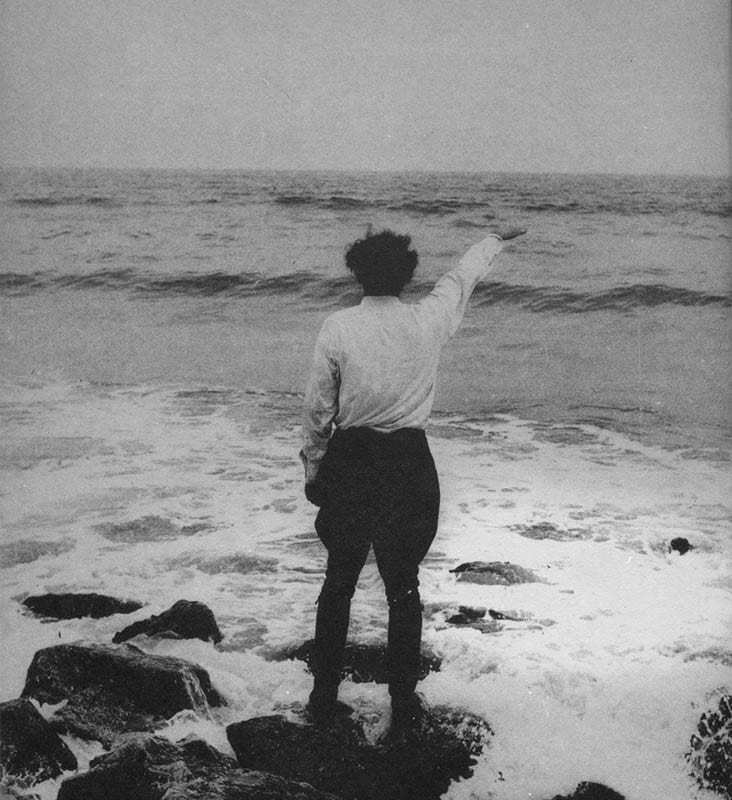
Another interesting shot from Occupations is shown above. Here, Anselm Kiefer does a reenactment of Caspar David Friedrich’s famous painting, Wanderer above the Sea of Fog (1818). The Wanderer is widely considered a famous German romantic masterpiece. So, when he juxtaposes jarring Nazi imagery over a softer era of German culture, it highlights a stress in the nation’s cultural identity.
Deutschlands Geisteshelden (German Spiritual Heroes) (1973)
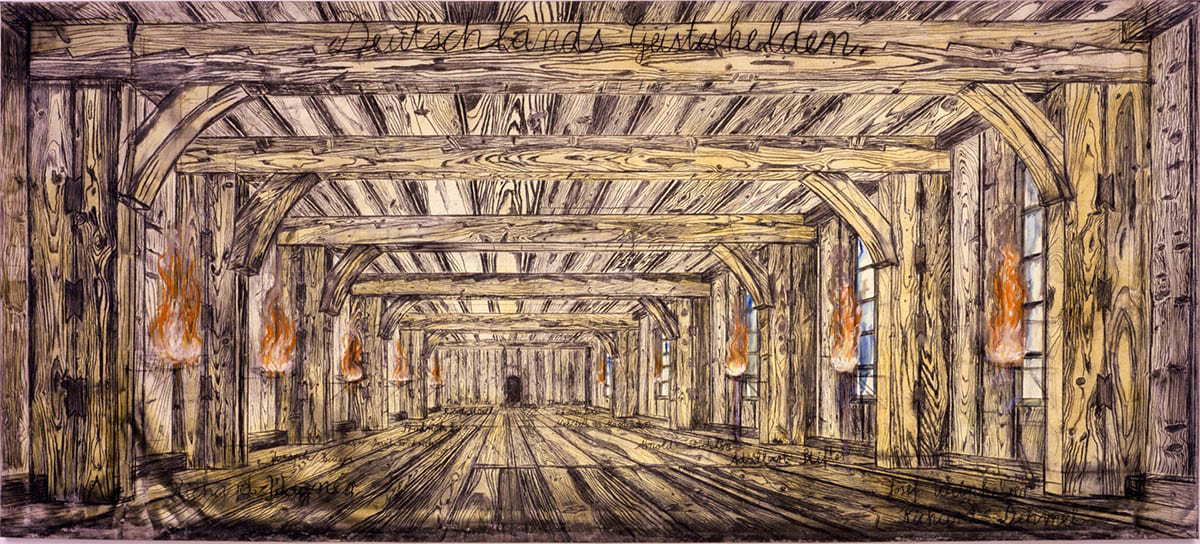
Look closely at this piece, and you’ll find the names of various “German Spiritual Heroes” under each fire. They include famous names such as Beuys, Arnold Böcklin, Caspar David Friedrich, Adalbert Stifter, Theodor Storm, and more.
Anselm Kiefer stylized the scene after Carinhall, a German hunting lodge where Nazis stored looted art. The house is empty, but the names remain, just like the fire the seems to burn forever above them. Here, we see Kiefer continue to mix various German icons and legends together. Yet, it looks almost like a vigil; an emotional scene about emptiness and artistic legacies.
Margarethe (1981)

This is perhaps Anselm Kiefer’s most famous piece. In the 1980’s, Kiefer began to incorporate elements like wood, sand, lead, and straw into his work. Here, he used the straw to symbolize blonde hair; specifically, Margarethe’s.
The poem Death Fugue by Holocaust survivor Paul Celan (1920-1970) inspired this work. The story takes place in a concentration camp, where Jewish inmates narrate their suffering under the camp’s Nazi officer.
Two women’s names are mentioned: the German Margarethe, and the dark-haired Jew Shulamith. The poem, or the officer, seems to dote on Margarethe’s blonde beauty. Meanwhile, Shulamith is cremated.
In Margarethe, the straw stretches across the canvas to symbolize her hair; while Shulamith’s collects on the bottom like ash. Some view the exact materials as adding extra dimension to the work, too. For example, the use of straw could evoke the German love of the land, and the decay of natural material over time.
Zweistromland [The High Priestess] 1985-89
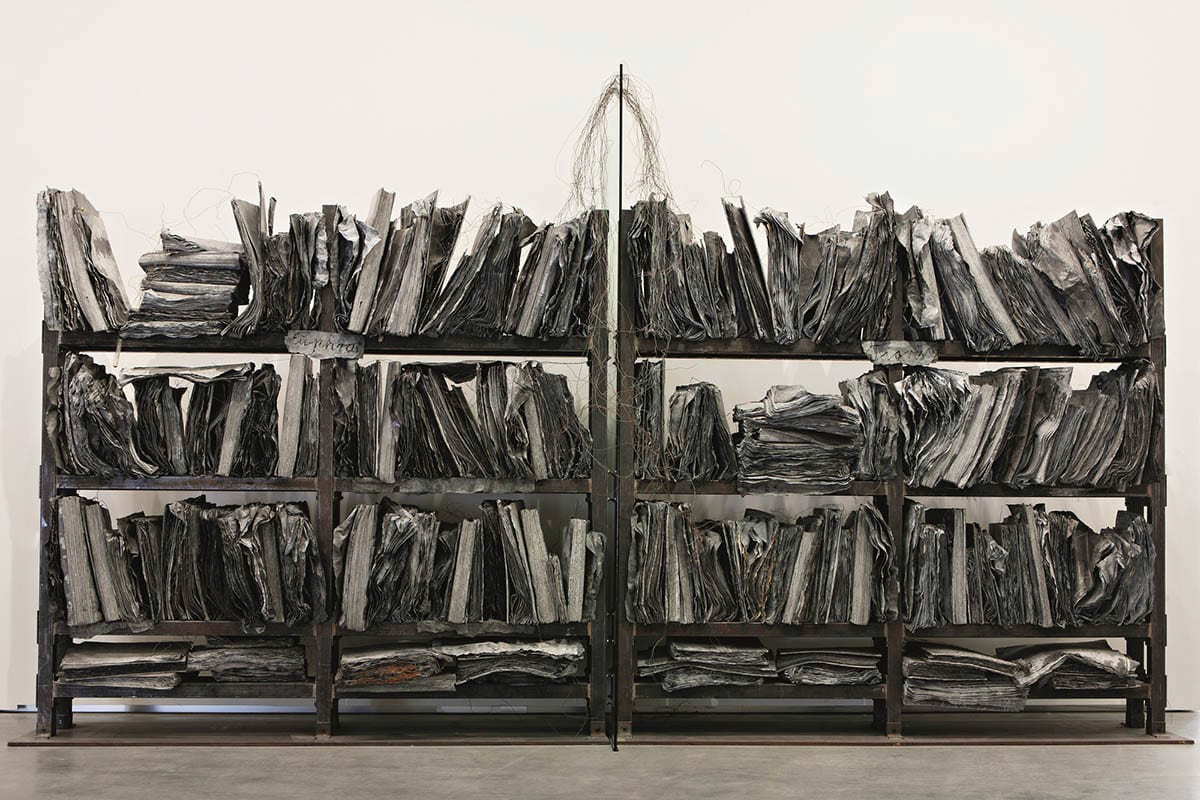
In the 1980s, Anselm Kiefer began to create work about other civilizations, and introduce the theme of alchemy. Here, these bookcases are named after the rivers Tigris and Euphrates, which connect to Mesopotamia (Zweistromland in German, literally meaning the land of two rivers). In addition, The High Priestess is a powerful tarot card used to divine the future.
Lead covers 200+ books and adds to the symbolism. Kiefer has explained its connection to alchemy, noting, “I remember when I discovered lead, I was so attracted by the material… and I didn’t know why. Then I found out in alchemy, it plays a big role. It’s the first step on the way to get gold…” To Kiefer, both art and alchemy experience “physical and metaphysical processes, like transfiguration, purification, filtration, concentration.”
So books are symbols of civilization, and in The High Priestess, many of them are sealed shut in heavy-weighing lead. Many lovers and analysts of Kiefer’s work see it as an expression of how difficult knowledge is to transfer through time.
Highlights at Auction
Athanor (1991)

Auction House: Sotheby’s
Prize realized: GBP 2,228,750
Sold in 2017
Dem Unbekannten Maler (To The Unknown Painter) (1983)
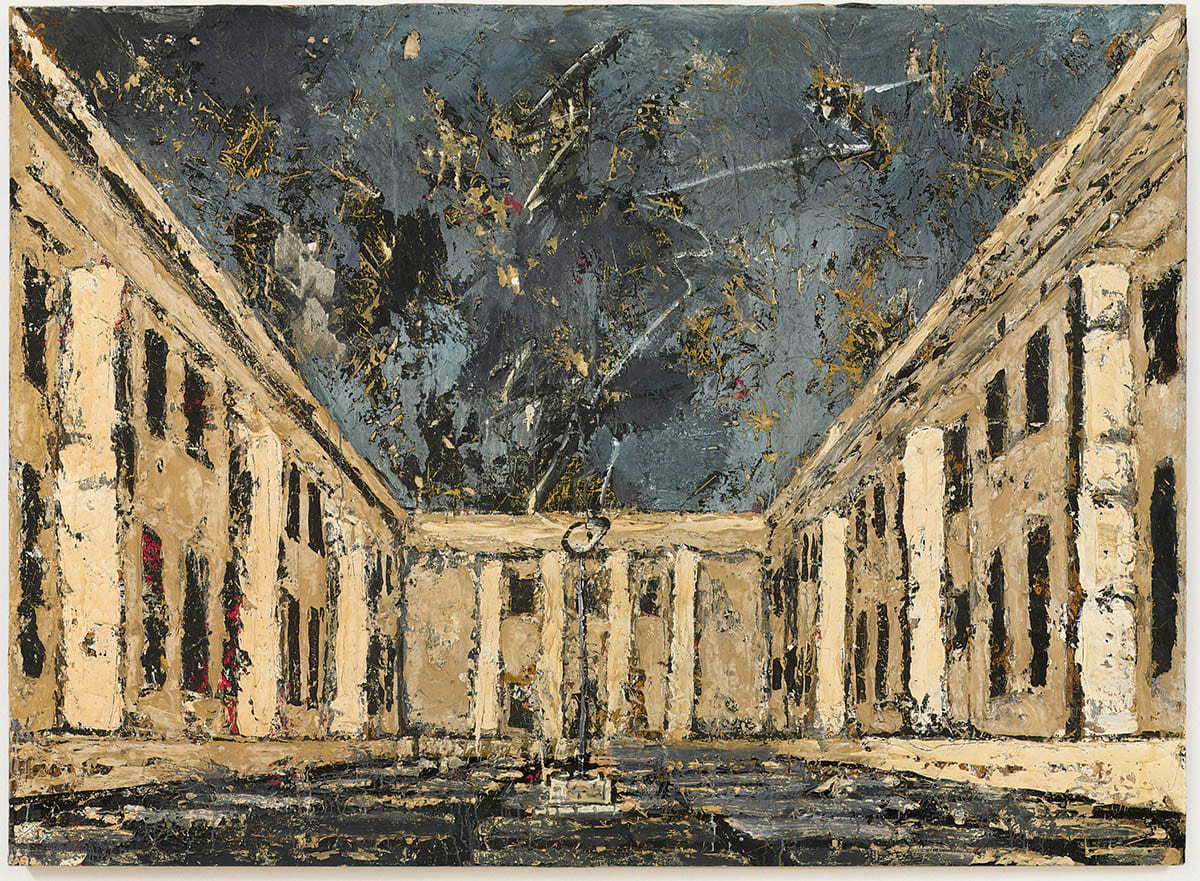
Dem Unbekannten Maler (To the Unknown painter) by Anselm Kiefer, 1983
Auction House: Christie’s
Price realized: USD 3,554,500
Sold in 2011
Laßt Tausend Blumen Blühen (Let A Thousand Flowers Bloom) (1999)
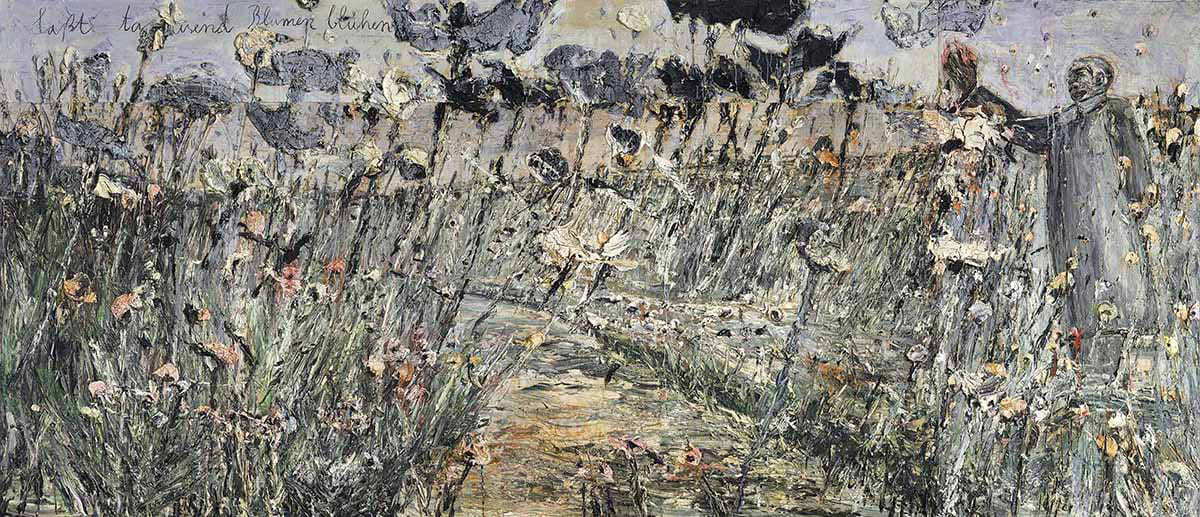
Laßt tausend Blumen blühen (Let a thousand flowers bloom) by Anselm Kiefer, 1999
Auction House: Christie’s
Price realized: GBP 1,988,750
Sold in 2017
Anselm Kiefer’s Reception Inside and Outside Germany

American and German audiences have processed Anselm Kiefer’s work from different points of view. The first group has viewed Kiefer’s work as symbolic of Vergangenheitsbewältigung, a German term that means “coming to terms with the past”. However, scholar Andreas Huyssen has noted that German critics have questioned whether the art seems to endorse or protest Nazi ideology.
Kiefer expresses a different take on his work: “Ruins, for me, are the beginning. With the debris, you can construct new ideas…”
In 1993, Kiefer moved his studio to Barjac, in the South of France. Since 2007, he has lived and worked between Croissy and Paris, where he continues to work today.







